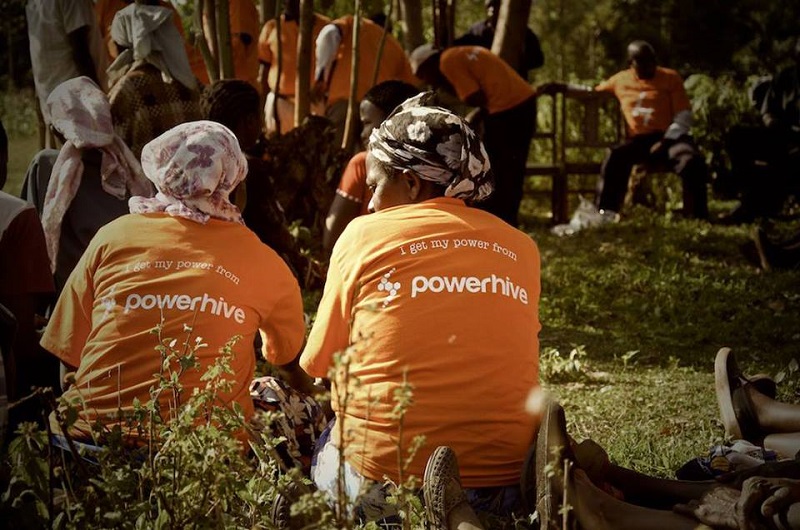Microgrid electricity provider Powerhive recently became the first company in Kenya’s history to be granted a utility concession to generate, distribute and sell electricity to the public.
Founded in 2011, Powerhive partners with utilities and independent power producers to provide access to productive, affordable, and reliable microgrid electricity to rural homes and businesses, with its proprietary technology business model enabling the financing, monetisation, and management of distributed microgrid solutions.
The company’s site selection tool, smart meter, development toolbox, and customer management platform allow it to originate, build, finance and manage bankable solar microgrids, with customers prepaying for Powerhive electricity using mobile money or scratch cards.
Its utility concession has allowed it to scale up operations in East Africa, beginning in Kisii and Nyamira counties, and to deliver electricity directly to hundreds of rural communities beyond the reach of the national grid.
Daniel Boucher, public relations lead for Powerhive, told Disrupt Africa the company implements a turnkey microgrid solution through subsidiaries in markets, such as Kenya, where it has local capacity and expertise. Powerhive looks to serve two key constituencies: the local partners who buy or license its development toolkit, and the end-users of microgrid electricity.
Powerhive East Africa is led by Zachary Ayieko, former chief executive officer (CEO) of Kenya Power and founding director of Kenya’s Rural Electrification Authority. Boucher said the company had been launched to address the lack of an electricity solution that provides the level of service required to support economic development and meaningfully improve quality of life, while being affordable.
“High capital costs prevent grid extension from reaching most rural areas. Solar home systems can proliferate quickly, but are difficult to service and offer very limited power. Traditional microgrids are usually powered by diesel generators that emit toxic pollutants and are expensive to operate. These systems lack adequate control technology, which makes them susceptible to energy theft and they depend upon local personnel to collect fees from customers in-person, resulting in collection rates as low as 50 per cent,” he said.
Powerhive’s technology platform, on the other hand, automates and manages microgrid operations such as payment collection and processing, and load balancing, thus reducing operational costs and investment risk, making electricity service affordable for end users and making rural electrification projects more attractive to private investment.
The company has raised project financing for its expansion in Kenya, which Boucher said will be an important part of deploying our solutions in most markets. Powerhive currently operates four microgrids serving more than 1,500 customers in Kenya, and plans to expand to serve more than 200,000 households in in the country.
“Right now, we are developing the first phase of the project in Kisii and Nyamira counties. We are also currently setting up operations in several countries in Asia and elsewhere in Africa,” Boucher said.
Powerhive makes money by selling its smart meter hardware and licensing its software to third parties. In markets where it deploys directly, it also makes money through revenues from end-user electricity payments.
“We are not yet profitable since we have not yet deployed any commercial scale projects, but we anticipate reaching profitability soon,” Boucher said.
He said the company estimated its microgrids could profitably serve several hundred million people, with the International Energy Agency (IEA) estimating that grid extension is the most economical solution for only 30 per cent of the 1.3 billion people who currently lack access to electricity.
“Of the remaining 70 per cent, the IEA estimates that a majority is best served by microgrids, as opposed to small home systems and kits. Powerhive’s experience in Kenya corroborates these statistics; a substantial majority of the off-grid households and businesses we survey are willing and able to pay for Powerhive electricity,” Boucher said.
The company discovered early on that customer acquisition is a costly and time consuming stage of development. In order to solve this problem, Powerhive developed a software programme called the Site Wizard for Analysis, Reconnaissance, and Mapping (SWARM), which saves considerable time and resources.
“Rather than sending personnel to investigate a location, SWARM enables us to remotely identify customers and site locations over broad regions. SWARM analyses sites based on financial, technical, and geospatial data (including satellite imagery), and calculates optimal microgrid locations, reticulation design, and estimated system size, resulting in a prioritised list of the most viable sites. Once the remote analysis is complete, the data are used to streamline the customer acquisition process,” Boucher said.
“Our pilot projects have helped us overcome many challenges including learning how to work effectively with local governments, and improving ability to size systems optimally based on usage data.”
Powerhive has also gathered millions of data points on energy usage, power production and use, and customer payments, developments which have slashed the cost of new customer connections in half, significantly increasing the size of the market that Powerhive can reach.
In terms of marketing, one of Powerhive’s main focuses is forging partnerships with IPPs and utilities.
“Our technology allows them to profitably deliver power in remote, frontier markets where it was previously infeasible,” Boucher said.
“This is enabled largely by our platform’s ability to manage customer accounts, automated microgrid management capability, and data analytics, which gives business managers unprecedented information about things like system status and revenue generation,” he said.
The company is confident the scale of the opportunity in East Africa is “enormous”, for two important reasons.
“Expanding mobile network connectivity has made it possible to monetise energy services for a major portion of the rural population without electricity access,” Boucher said.
The second reason is the falling cost of energy generation and storage.
“When these off-grid rural electrification systems are deployed at scale, it becomes profitable to sell electricity even though many customers have a low ability to pay.”


